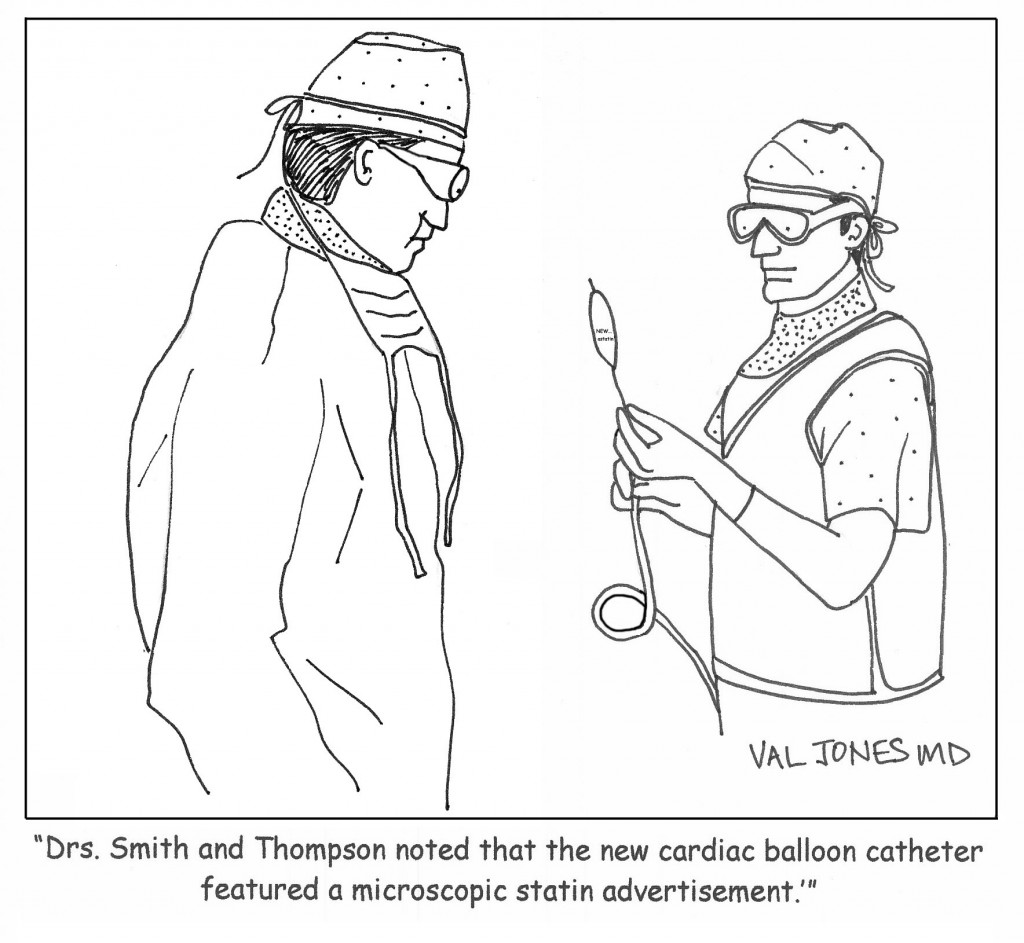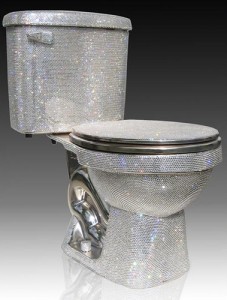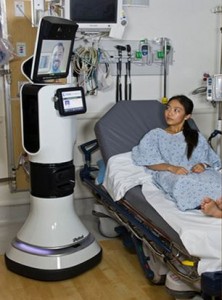December 9th, 2013 by Dr. Val Jones in Opinion, True Stories
1 Comment »
 Over the years that I’ve worked in acute inpatient rehab centers, I have been truly vexed by a particular type of patient. Namely, the stubborn patient (usually an elderly gentleman with a military or armed forces background). I know that it’s not completely fair to generalize about personality types, but it seems that the very nature of their work has either developed in them a steely resolve, or they were attracted to their profession because they possessed the right temperament for it. Either way, when they arrive in the rehab unit after some type of acute illness or traumatic event, it is very challenging to cajole them into health. I suspect that I am failing quite miserably at it, frankly.
Over the years that I’ve worked in acute inpatient rehab centers, I have been truly vexed by a particular type of patient. Namely, the stubborn patient (usually an elderly gentleman with a military or armed forces background). I know that it’s not completely fair to generalize about personality types, but it seems that the very nature of their work has either developed in them a steely resolve, or they were attracted to their profession because they possessed the right temperament for it. Either way, when they arrive in the rehab unit after some type of acute illness or traumatic event, it is very challenging to cajole them into health. I suspect that I am failing quite miserably at it, frankly.
Nothing is more depressing for a rehab physician than to see a patient decline because they refuse to participate in activities that are bound to improve their condition. Prolonged immobility is a recipe for disaster, especially in the frail elderly. Refusal to eat and get out of bed regularly can make the difference between life and death within a matter of days as leg clots begin to form, and infectious diseases take hold of a body in a weakened state. The downward spiral of illness and debility is familiar to all physicians, but is particularly disappointing when the underlying cause appears to be patient stubbornness.
Of course, the patient may not be well enough to grasp the “big picture” consequences of their decisions. And I certainly do not pretend to understand what it feels like to be elderly and at the end of my rope in regards to prolonged hospital stays. Maybe I’d want to give up and be left alone too. But it’s my job to get them through the tough recovery period so they can go home and enjoy the highest quality of life possible. When faced with a patient in the “wet cat” phase of recovery (I say “wet cat” because they appear to be as pleased to be on the rehab unit as a cat is to being doused against their will), these are the usual stages that I go through:

1. I explain the factual reasons for their admission to rehab and what our goals are. I further describe the risks of not participating in therapies, eating/drinking, or learning the skills they need to care for themselves with their new impairments.
2. I let them know that I’m on their side. I understand that they don’t want to be here, and that I will work with them to get them home as soon as possible, but that I can’t in good conscience send them home until it’s safe to do so.
3. I give them a projected discharge date to strive towards, with specific tasks that need to be mastered. I try my best to give the patient as much control in his care as possible.
4. I ally with the family (especially their wives) to determine what motivates them, and request their presence at therapy sessions if that seems fruitful rather than distracting. (Helpful spouse input: “Mike only wants to walk with me by his side, not the therapist.”)
5. I ask loved ones how they think the patient is doing/feeling and if there is anything else I can do to make his stay more pleasant. (Helpful input: “John loves ice cream. He hates eggs” or “John usually goes to bed at 9pm and gets up at 4am every day.”)
6. I meet with nursing and therapy staff to discuss behavioral challenges and discuss approaches that are more effective in obtaining desired results. (For example, some patients will always opt out of a task if you give them a choice. However, they perform the task if you state with certainty that you are going to do it – such as getting out of bed. “Would you like to get out of bed now, Mr. Smith?” will almost certainly result in a resounding “No.” Followed perhaps by a dismissive hand wave. However, approaching with a “It’s time to get out of bed now, I’m helping you scoot to the edge of the bed and we’re going to stand up on 3. One, two, three!” Is much more effective.)
7. If all else fails and the patient is not responding to staff, loved ones, or doctors, I may ask for a psychiatric consult to determine whether or not the patient is clinically depressed or could benefit from a medication adjustment. Typically, these patients are vehemently opposed to psychiatric evaluation so this is almost the “nuclear” option. Psychiatrists can be very insightful regarding a patient’s mindset or barriers to participation, and can also help to tease out whether delirium versus dementia may be involved, and whether the patient lacks capacity to make decisions for himself.
8. If the patient still does not respond to further tweaks to our approach to therapy or medication regimen, then I begin looking for alternate discharge plans. Would he be happier in a skilled nursing home environment where he can recover at a slower rate? Would he be amenable to an assisted living or long term care facility? (The answer is almost always a resounding “no!”) Is the patient well enough to go home with home care services and round-the-clock supervision? Does the family have enough support and can they afford this option?
9. At this point, after exhausting all other avenues, if the patient is still declining to move or eat or be transferred elsewhere, some sort of infection might set in. A urinary tract infection, a pneumonia, or bowel infection perhaps. Then the patient becomes febrile, is started on antibiotics, becomes weaker and less responsive, and is transferred to the medicine floor or higher level of care. Alternatively at this phase (if he is lucky enough not to become infected) the patient might have a cardiac event, stroke, blood clot with pulmonary embolus (especially if he is a large man), kidney failure, or develop infected pressure ulcers. Any of which can be cause for transfer to medicine. In short, if you stay in the hospital long enough, you can find a way to die there.
10. After much hand-wringing, angst, and generalized feelings of helplessness the wives and I review the course of events and ask ourselves if we could have done anything differently. “If I had acted like a drill sergeant, do you think he would have responded better?” I might ask. “No dear, that would only have made things worse.” She’ll reply. I’ll see how disappointed she is in his deterioration, staring off towards pending widowhood, engaging in self-blame and what-ifs (E.g. “If we had only had more money perhaps we could have taken him home with 24 hour nursing care until he was better…” “If I had cooked all his meals, maybe he would have gained enough strength to avoid the infection…” etc.) I try to be reassuring that none of this would have made a difference, myself reeling from the failure to get the patient home.
This 10 step process happens far more often than I’d like, and I certainly wish there were a way to head off the downward spiral with some kind of effective intervention. Would it help to have a volunteer unit of ex-military peer counselors in the hospital who could visit with my patients and help to motivate them to get better? (Operation “wet cat” perhaps?) Should I change my approach and put on my drill sergeant hat at the earliest stages of recovery to force these guys out of bed? Can educating younger law enforcement and military workers about illness help to prepare them to be more compliant patients one day?
I don’t know the cure for stubbornness, but it sure leaves a lot of widows in its wake.
November 25th, 2013 by Dr. Val Jones in Humor
No Comments »
With the new guidelines for prescribing cholesterol-lowering medications, I’ve been wondering if perhaps we’re becoming overexposed to these drugs? 🙂

November 19th, 2013 by admin in Health Policy, Health Tips, Humor
No Comments »
 November 19 is International Toilet Day. That may sound funny, but it is a serious event. It is a day to contemplate what we have and others don’t. As we sit in privacy on our comfortable flush toilets today, it is hard to imagine that a scant two hundred years ago sewage disposal meant emptying chamber pots into the nearest convenient place, which was often the street.
November 19 is International Toilet Day. That may sound funny, but it is a serious event. It is a day to contemplate what we have and others don’t. As we sit in privacy on our comfortable flush toilets today, it is hard to imagine that a scant two hundred years ago sewage disposal meant emptying chamber pots into the nearest convenient place, which was often the street.
If you were out for a walk in Britain in the 18th century and heard the cry “gardy-loo,” you had better scamper across the street because the contents of a chamber pot were set to be hurled your way from a window. The expression derives from the French “regardez l’eau” and was commonly heard as chambermaids carried out their duties. Some even suggest that the custom of a gentleman walking on the outside when accompanying a lady can be traced to the desire to protect the fair sex from the trajectory of the chamber pot’s contents.
What may be even harder to imagine than the sidestepping of flying fecal matter is that roughly a third of the world’s population today cannot easily sidestep the problems associated with exposure to untreated sewage because of a lack of access to a toilet. As a consequence, diarrheal disease is rampant, killing more children than AIDS, malaria and measles combined. In developing countries a child dies every twenty seconds as a result of poor hygiene. Mahatma Gandhi recognized the problem when he proclaimed in 1925 that “sanitation is more important than independence.”
The invention of the flush toilet and the introduction of plumbing for sewage disposal mark two of the most significant advances in history. Let’s get one of the toilet myths out of the way right away. Contrary to numerous popular accounts, Thomas Crapper did not invent the flush toilet! It is easy to see how connecting his name with the invention would make for a compelling tale, but what we actually have here is a prime example of the classic journalistic foible, “a story that is too good to check.”
Almost all accounts of the Crapper saga claim that a 1969 book by Wallace Reyburn, cleverly titled “Flushed with Pride-The Story of Thomas Crapper” establishes Crapper as the inventor of the flush toilet. Reyburn actually says no such thing. The book is an entertaining celebration of the life and times of Crapper, the man who “revolutionized the nations’ water closets.” Indeed, that he did do. But flush toilets were around long before Thomas Crapper ever got into the game in the 19th century.
The first flush toilet appeared as early as 1700 B.C. The Palace of Knossos on the island of Crete, built around that time featured a toilet with an overhanging cistern that dispensed water when a plug was removed. Curiously it would take another three thousand years until the next step in flushing technology was taken by Sir John Harrington, godson of Queen Elizabeth I. In 1596 Harrington installed a “water closet” in the Royal Palace that featured a pipe fitted with a valve connected to a raised water tank. Opening the valve released the water that would carry waste into a cesspool. Apparently the Queen was not overly pleased with the invention because odours from the cesspool wafted up into the Royal powder room. It would take another couple of centuries before this problem was addressed.
The first patent for a flushing toilet designed to keep sewer gases from seeping back was issued to Alexander Cummings in 1775. Cummings designed a system that allowed some water to remain in the bowl after each flush, preventing the backflow of odours. Joseph Bramah attempted to improve upon this system with a sophisticated valve that was supposed to seal the waste pipe after each flush. While it didn’t work perfectly, Bramah’s toilet was introduced at just the right time because London was beginning to install sewage systems. Some 6000 Bramah toilets soon dotted the city’s landscape. And then about a hundred years later, along came Thomas Crapper.
In 1861 the Thomas Crapper plumbing company opened for business in London. The time was ripe for the sale of plumbing supplies because the need for proper sanitation was being firmly established. A public report issued in the city of Leeds claimed a significantly higher death rate among children who lived in “dirty” streets where sewage flowed openly. And in 1854 physician John Snow had pinpointed the homes in London where someone had contracted cholera during an epidemic and traced the problem to water contaminated with sewage being dispensed from a pump in Broad Street. The need to flush away problems associated with sewage was becoming clear.
There is no question that Crapper made significant improvements in toilet technology. He invented a pull-chain system for flushing, and an air tight seal between the toilet and the floor. Crapper was also responsible for installing plumbing at Westminster Abbey where to this day visitors can view the manhole covers clearly displaying the name “Thomas Crapper Co.” What he was not responsible for was the introduction of the word “crap” into our vocabulary. That term meaning “refuse” predates Crapper by several centuries.
It is virtually impossible to attribute the numerous improvements in toilet technology since Crapper’s time to individuals. There are patents galore for eliminating overflow, reducing water usage, curbing noise, improving waste removal from the side of the bowl, devices to alert night time users if the seat is up and gimmicks to encourage men to aim properly. And the future may belong to toilets equipped with biosensors that automatically monitor urine and feces for health indicators such as sugar and blood. But for now, just think of the amazing technology that allows for the removal of the roughly 200 grams of poo we deposit per person per day. That’s a stunning 600,000 kilos in a city of three million!
So on November 19, as we get comfy on our high tech toilets, ready to flush away the remnants of a scrumptious meal, a roll of soft toilet paper and fragrant soap by our side, let’s give a thought to how we can help those unlucky enough to have been born in a place where “gardy-loo” still rings true.
***
Joe Schwarcz, Ph.D., is the Director of McGill University’s Office for Science and Society and teaches a variety of courses in McGill’s Chemistry Department and in the Faculty of Medicine with emphasis on health issues, including aspects of “Alternative Medicine”. He is well known for his informative and entertaining public lectures on topics ranging from the chemistry of love to the science of aging. Using stage magic to make scientific points is one of his specialties.
October 23rd, 2013 by Dr. Val Jones in Health Tips, Opinion
1 Comment »
 I realize that my blog has been littered with depressing musings on healthcare lately, and so I thought I’d offer up one very positive and “actionable” suggestion for all you patients out there. In the midst of a broken system where your doctor is being pressured to spend more time with a computer than listening and examining you, where health insurance rates and co-pays are sky-rocketing, and where 1 in 5 patients have the wrong diagnosis… There is one “magic” question that you should be asking your physician(s):
I realize that my blog has been littered with depressing musings on healthcare lately, and so I thought I’d offer up one very positive and “actionable” suggestion for all you patients out there. In the midst of a broken system where your doctor is being pressured to spend more time with a computer than listening and examining you, where health insurance rates and co-pays are sky-rocketing, and where 1 in 5 patients have the wrong diagnosis… There is one “magic” question that you should be asking your physician(s):
“What else could this be?”
This very simple question about your condition/complaint can be extremely enlightening. Physicians are trained to develop extensive “differential diagnoses” (a list of all possible explanations for a set of signs and symptoms) but rarely have time to think past possibilities 1 through 3. That’s one of the reasons why so many patients have the wrong diagnosis – which is both costly in terms of medical bills, time, and pain and suffering.
There is a risk in asking this question – you don’t want to be over-tested for conditions that you are unlikely to have, of course. But I maintain that the cost/risk of living with the wrong diagnosis far exceeds the risk of additional testing to confirm the correct diagnosis. So my advice to patients is to keep this very important question in mind when you see your doctor for a new concern.
In addition to asking this question of your doctor, you can also ask it during a second opinion meeting with another physician. The good news is that these days you don’t even need to get a second opinion in person. I myself have been working with an online second-opinion service called eDocAmerica for several years. Those who sign up for the service can pick the brains of board-certified U.S. physicians on any subject, 24-7 via email (and in some states via phone). The cost is extraordinarily reasonable when provided by employers, and winds up being about one or two dollars per member per month.
If you have a complicated disease or condition (such as cancer) where experts may not all agree on the best treatment plan, a company called Best Doctors offers detailed chart reviews and second opinions from top specialists at academic centers. Again, this service is quite affordable and reasonable if the cost is spread among a group. Employers are able to pay a small fee per employee per month to enroll the entire company in the service.
So why don’t all employers offer these benefits? I suspect that part of the reason is lack of awareness that second opinion services exist, and the other part is tepid demand on the part of employees. So if you’d like to make sure that you’re not one of the five people who have the wrong diagnosis, why not raise the question with your HR department? Enrolling as an individual is also an option, and still as inexpensive as about thirty dollars a month.
My bottom line: make sure you ask your doctor the magic question at least once for every new concern that you have. And if you’re too shy to do it, or your doctor’s answer seems too short, then get a second opinion online or in person.
This one little question could save your life.
October 21st, 2013 by Dr. Val Jones in Opinion
9 Comments »

A "Medical Service Provider"
As I sat in my orthopedist’s exam room, the discussion quickly turned from my chief complaint to his: “I don’t know why I’m doing this anymore,” he said. “Medicine is just not what it used to be, and I don’t enjoy my work anymore. The bureaucracy and regulations are bad enough, but what really gets me is the hostility. My patients are chronically angry and mean. The only comfort I get is from talking to other doctors. Because they all feel the same way.”
Perhaps this sentiment strikes you as the spoiled musings of a physician who is lamenting his demotion from “god” to “man” – reflecting the fundamental change in the public perception of doctors that has occurred over the past ~50 years. Or maybe you wonder if this surgeon’s patients are mean because he is a bad doctor, or isn’t respectful of their time? Maybe he deserves the hostility?
I’ve found this particular surgeon to be humble, thoughtful, and thorough. He is genuinely caring and a proponent of conservative measures, truly eager to avoid surgical procedures when possible. He is exactly what one would hope for in a physician, and yet he is utterly demoralized. Not because of the hours of daily documentation drudgery required by health insurance and government regulators, but because the very souls he has been fighting to serve have now turned on him. Their attitudes are captured in social media feeds on every major health outlet:
Doctors? I no longer afford that kind of respect: I call them “medical services providers.” They and their families and the medical cabal created this mess when they got control of med schools so that the wealth of a nation would remain in the hands of a few medical elites and their families. The very notion that doctors are smarter, more productive, more anything than others is ludicrous. They are among the worst sluff-offs of our society, yet the richest at the same time. It is an unreal world they have created themselves and they are now watching the natural outcome of such a false system.
The very best physicians have always been motivated primarily by the satisfaction of making a difference in their patients’ lives. That drive to “help others” is what makes us believe that all the sacrifices are worth it – the years of training, the educational debt, the lack of sleep, the separation from family, the delay (and sometimes denial) of becoming a parent, the daily grind of administrative burden, the unspeakable emotional toll that death and disease take on your heart… All of that is offset by the joy of changing and saving lives. But when that joy is taken from you, what remains is despondency and burn out.
What patients need to realize is that they have been (and still are) the primary motivator of physician job satisfaction. Patients have the power to demoralize us like no one else – and they need to take that power very seriously. Because if negative attitudes prevail, and hostility spreads like a cancer in our broken system, the most caring among us will be the first to withdraw.
And in the end all that will be left is “medical service providers.”
 Over the years that I’ve worked in acute inpatient rehab centers, I have been truly vexed by a particular type of patient. Namely, the stubborn patient (usually an elderly gentleman with a military or armed forces background). I know that it’s not completely fair to generalize about personality types, but it seems that the very nature of their work has either developed in them a steely resolve, or they were attracted to their profession because they possessed the right temperament for it. Either way, when they arrive in the rehab unit after some type of acute illness or traumatic event, it is very challenging to cajole them into health. I suspect that I am failing quite miserably at it, frankly.
Over the years that I’ve worked in acute inpatient rehab centers, I have been truly vexed by a particular type of patient. Namely, the stubborn patient (usually an elderly gentleman with a military or armed forces background). I know that it’s not completely fair to generalize about personality types, but it seems that the very nature of their work has either developed in them a steely resolve, or they were attracted to their profession because they possessed the right temperament for it. Either way, when they arrive in the rehab unit after some type of acute illness or traumatic event, it is very challenging to cajole them into health. I suspect that I am failing quite miserably at it, frankly.



 November 19 is International Toilet Day. That may sound funny, but it is a serious event. It is a day to contemplate what we have and others don’t. As we sit in privacy on our comfortable flush toilets today, it is hard to imagine that a scant two hundred years ago sewage disposal meant emptying chamber pots into the nearest convenient place, which was often the street.
November 19 is International Toilet Day. That may sound funny, but it is a serious event. It is a day to contemplate what we have and others don’t. As we sit in privacy on our comfortable flush toilets today, it is hard to imagine that a scant two hundred years ago sewage disposal meant emptying chamber pots into the nearest convenient place, which was often the street. I realize that my blog has been littered with
I realize that my blog has been littered with 








